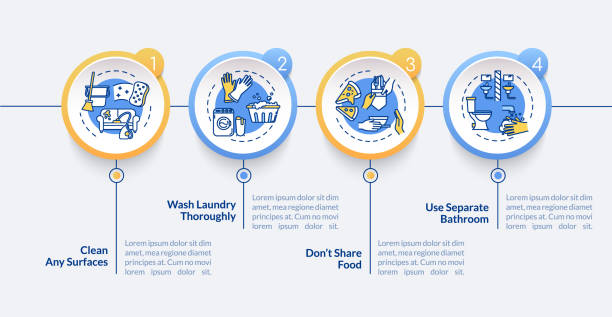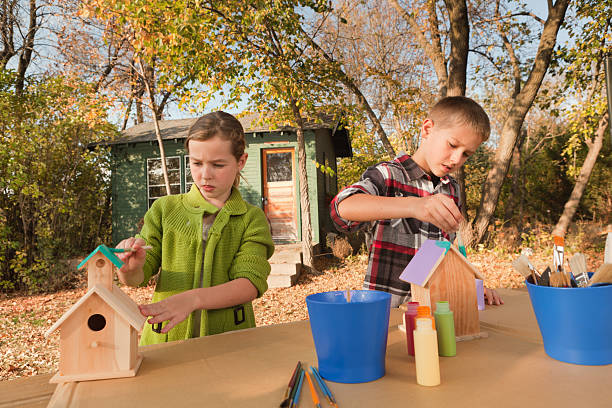Cleaning surfaces regularly in your home can help prevent germs such as Shigella and Giardia from spreading. Cleaning surfaces at home helps remove germs, dirt, and other impurities, which keeps you and your family healthy. It is unlikely that you will need to disinfect or sanitize your home to prevent the spread of diseases unless someone is sick.
Define Cleaning, Sanitizing and Disinfecting
Cleaning eliminates the majority of germs, dirt, and impurities. Cleaning surfaces with soap and water is best.
Sanitizing lowers germs below levels that public health codes and regulations consider safe. Sanitizing can be done using weaker bleach solutions or sanitizing aerosols. Sanitize surfaces after cleaning them.
Kills the majority of germs on surfaces. The chemicals or stronger bleach solutions are used to disinfect. Surfaces should be cleaned before disinfecting them.
Cleaning regularly and cleaning first
Cleaning is a must to remove the majority of germs in your home. Cleaning surfaces with household cleaners containing soap or detergent can remove dirt and germs, reducing the risk of contamination. Most harmful bacteria or viruses can be removed from surfaces by cleaning alone. Before disinfecting or sanitizing surfaces, they should be thoroughly cleaned. Dirt can make it difficult for chemicals to reach and kill germs.
After cleaning, sanitizing is used to reduce the amount of germs left on surfaces.
After cleaning, viruses and bacteria can remain on surfaces. Disinfection is a way to kill them. By killing germs, disinfecting surfaces after cleaning can reduce the spread of disease. For everyday cleaning, you don’t need to disinfect or sanitize unless someone is sick or has recently visited.
Clean first and then disinfect or sanitize if necessary.
How to clean surfaces in your home
Regularly clean surfaces that are high-touch (such as light switches, knobs, and counters) immediately after having guests in your home.
If you see that other surfaces are dirty, or if it is necessary, clean them. If you have people in your home who are more susceptible to getting sick, like young children or people with weak immune systems, clean them more frequently. You can also disinfect.
Follow the instructions on each product’s label to clean surfaces.
How to safely clean Various Surfaces
Cleaning regularly is usually enough to stop the spread of bacteria. Use these tips to safely and effectively clean surfaces around your home.
Hard surfaces such as counters and certain toys.
Surfaces can be cleaned with soap and warm water or cleaning products that are appropriate for the surface.
For soft surfaces such as carpets, rugs, and drapes
Use cleaning products that are suitable for these surfaces to clean the surface.
If possible, follow the manufacturer’s instructions when washing items. Dry items thoroughly using the warmest water setting.
Vacuum all surfaces, including carpets and rugs. Safely dispose of dirt.
To wash laundry items such as clothes, towels, cloth toys, and linens, use
Use detergent at the recommended temperature for water.
The items should be dried completely.
You can wash dirty clothes from someone who is sick without harming other people.
Use the instructions for surfaces to clean your laundry hamper or clothes hamper.
Hands should be washed after handling dirty laundry.
Electronics such as mobile phones, tablets, touch screens, and keyboards.
Consider using a wipeable covering on your electronics to make cleaning and disinfection easier.
Clean according to the manufacturer’s instructions.
Keep your hands clean to prevent germs from spreading around your home. Learn More
How to Clean Your Home
After cleaning, you may want to sanitize certain surfaces and items in your home.
Sanitize all surfaces and objects that a child or infant may touch, including toys, infant feeding products, and play surfaces.
After a natural disaster or an emergency, clean surfaces that come into contact with food.
If you have a recalled product, it is advisable to clean it in your refrigerator.
Follow the instructions on each product’s label to sanitize surfaces.
How to Sanitize in a Safe Way
If surfaces and objects have been cleaned properly after use, sanitizing them daily may not be necessary. Use a weaker solution of bleach or a sanitizing product registered by the EPA to sanitize an object or surface.
Non-porous items, such as toys and infant food items.
You can sanitize your items either by boiling them, steaming them, or using a milder bleach solution. Consult the manufacturer of the item to determine which method is best. Some items can be cleaned in a dishwasher that has a sanitizing mode.
After sanitizing, place the items on a clean and unused paper towel or dish towel. Allow to air-dry completely before storing.
Avoid using a dishtowel to dry items. This can transfer germs.
For surfaces such as kitchen countertops and food preparation areas
Use hot, soapy water to clean the counters.
Use a homemade solution of bleach or sanitizing agents to clean any surface that was contaminated or touched by raw meat, poultry, or juices, including the interior sink.
You should also disinfect your house if you know someone who is sick or is at higher risk of getting sick because of a weak immune system. (For example, those on immune-suppressing drugs to treat cancer, organ transplants, or other illnesses, HIV-positive people, or those with genetic conditions or HIV that affects the immune system.)
How to safely disinfect
Use an EPA-registered disinfecting product or a more powerful bleach solution to disinfect.
First, clean the surface using soap and water. Before using disinfecting products, read the labels.
Use chemical disinfectants with caution.
To ensure that disinfectants are used safely and effectively, always read the instructions on the label.
Wear the recommended protective gear (such as gloves or goggles) to protect your skin and eyes from possible splashes.
Let the disinfectant stay on the surface for a sufficient amount of time to kill germs. We call this contact time. The directions will tell you the contact time. The surface must remain wet throughout the contact time to kill germs.
If you are using the product indoors, ensure that there is adequate ventilation (for instance, open windows and doors or use a window fan).
If the instructions say to dilute a product with water, use water at room temperature (unless the label says otherwise).
Label diluted cleaning or disinfectant solutions.
Keep chemicals away from children and pets.
Mixing products or chemicals is not recommended.
Avoid putting disinfectant products directly on your skin or ingesting them. These products may cause serious harm.
No disinfectant products should be used to wash or bathe your pet.
After disinfecting your hands, immediately wash them for 20 seconds with soap and warm water.
If ready-to-use products aren’t available, bleach solutions can be used to disinfect many surfaces. When properly diluted, bleach solutions are effective against bacteria and viruses. Find out more about how to clean and disinfect surfaces with bleach solutions.



